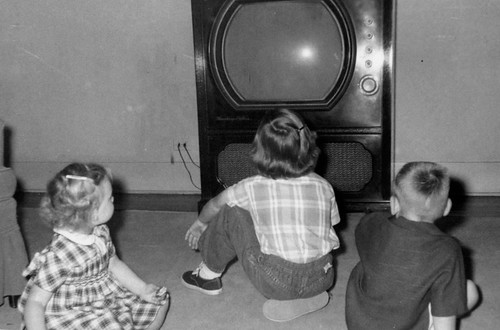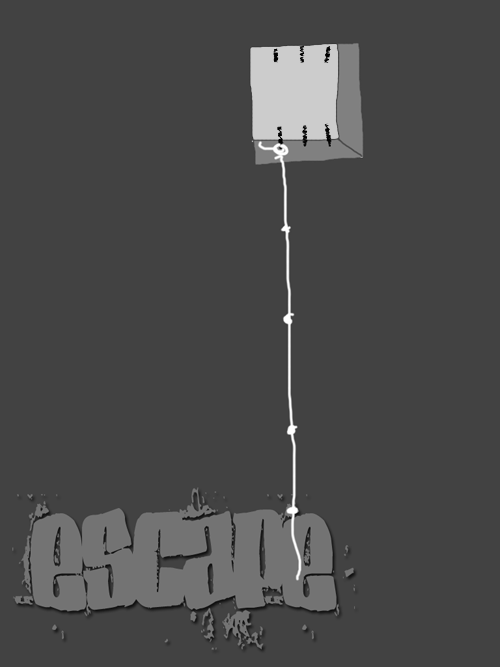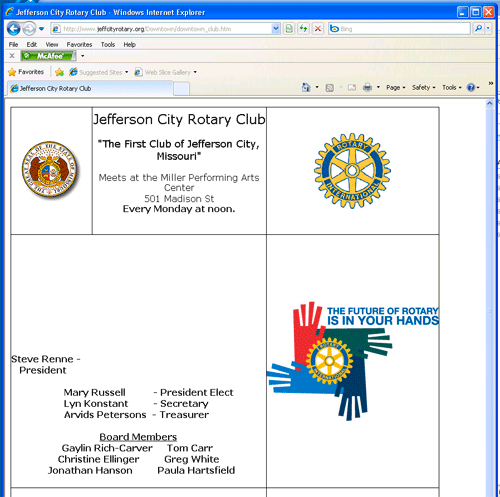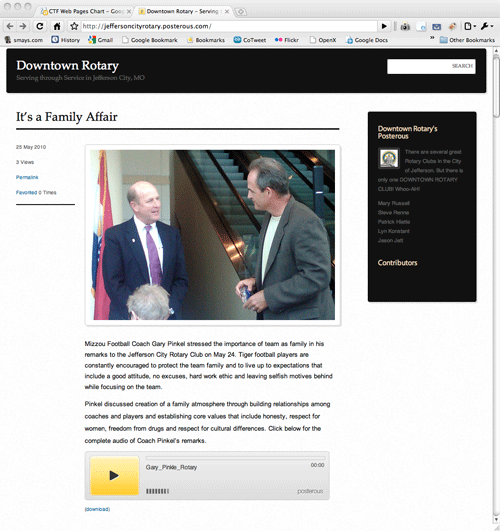This little screencast runs under 5 min and features two of my favorite tools for taking notes. Notational Velocity is an application that stores and retrieves notes. Really fast. Simplenote replaces the Notes app on your iPhone, iPod touch, or iPad and lets you access your notes from anywhere.
Monthly Archives: May 2010
Escape
The Girl Who Kicked the Hornet’s Nest by Stieg Larsson
I’m reading The Girl Who Kicked The Hornet’s Nest by Stieg Larsson. The final book (Larsson died in 2004) featuring Lisbeth Salander, ” the best hacker in Sweden.” I’m not spoiling anything by sharing this passage of what has to be one of the more secure log-in’s:
“She started by going to a website that advertised rather uninteresting pictures by an unknown and not especially skilled amateur photographers named Gil Bates in Jobsville, Pennsylvania. Salander had once checked it out and confirmed that the town of Jobsvile did not exist. Nevertheless, Bates had taken more than 200 photographs of the community and created a gallery of small thumbnails. She scrolled down to image 167 and clicked to enlarge it. It showed the church in Jobsville. She put her cursor on the spire of the church tower and clicked. She instantly got a pop-up dialog box that asked for her ID and password. She took out her stylus and wrote the word Remarkable on the screen as her ID and A(89)Cx#magnolia as the password.
She got a dialog box with the text [Error–you have the wrong password] and a button that said [OK–try again]. Lisbeth knew that if she clicked on [OK–try again] and tried a different password, she would gt the same dialog box again–for years and years, for as long as she kept trying. Instead she clicked on the ‘o’ in Error.
The screen went blank. Then an animated door opened and a Lara Croft-like figure stepped out. A speech bubble materialized with the text [WHO GOES THERE?]. She clicked on the bubble and wrote Wasp. She got the instant reply [PROVE IT–OR ELSE…] as the animated Lara Croft unlocked the safety catch on her gun. Salander knew it was no empty threat. If she entered the wrong password three times in a row the site would shut down and the name Wasp would be struck from the membership list.”
Which reminded me of this password (to the CIA database) from the novel, Bangkok Tattoo:
AQ82860136574X-Halifax nineteen [lowercase] Oklahoma twenty-2 BLUE WHALE [all uppercase] Amerika stop 783
“A business model in decay”
“…the creation of content that will be supported by ads is a business model in decay. Abundance isn’t the problem; it’s that the advertisers are now in the content business themselves, and this is a rapidly-growing sector of the advertising world. Advertising is in a full-blown revolution, as company after company discovers they don’t need media the way they used to, because they’ve become media companies themselves.”
Terry Heaton says there is no “content business” anymore and that’s not the business we (his clients) were in anyway.
“We’ve always been in the advertising business, although it sure looked and felt like we were in the content business. Our bottom lines were/are determined by advertising, and that’s the real business we’re in. Media companies need to accept that and move on to finding creative ways to enable commerce in our markets.”
Since posting the excerpts above, I’ve been remembering my days in small-market radio during the ’70s and early ’80s. I was an announcer and program director, but never in sales. We thought of ourselves as “talent.”
It was clearly understood by us that the advertising was the means to the end of creating the information and entertainment (mostly recorded music). We had to pay for all this wonderful stuff we were doing.
What the sales people believed –an management knew– was the news and music and all the rest was merely a way to attract ears for the commercials we sold to advertisers. We were not in the music business or news business… we were in the advertising business.
If you doubt that, go back and listen to this interview with Congressman Paul C. Jones to built the radio station. Or read the recollections of Joe Bankhead, who was one of the stations first salesmen. It was clearly about serving the businesses in the area. They were more than willing to put on any kind of programming that would attact enough listeners to satisfy a sponsor.
Google Tasks
Cognitive Surplus: The Great Spare Time Revolution
“Someone born in 1960 has watched something like 50,000 hours of television already. Fifty thousand hours—more than five and a half solid years.”

Sweet Mother of God! I can tack another 7 or 8 years on that. That daunting stat is from an article in latest issue of WIRED Magazine in which Clay Shirky and Daniel Pink share some thoughts on what Mr. Shirky calls the “cognitive surplus”:
“Television was a solitary activity that crowded out other forms of social connection. But the very nature of these new technologies fosters social connection—creating, contributing, sharing. When someone buys a TV, the number of consumers goes up by one, but the number of producers stays the same. When someone buys a computer or mobile phone, the number of consumers and producers both increase by one. This lets ordinary citizens, who’ve previously been locked out, pool their free time for activities they like and care about. So instead of that free time seeping away in front of the television set, the cognitive surplus is going to be poured into everything from goofy enterprises like lolcats, where people stick captions on cat photos, to serious political activities like Ushahidi.com, where people report human rights abuses.”
“Cognitive Surplus.” I love the very idea of that. I’m not sure I would be a better person had I spent those 50,000+ hours blogging instead of watching Maverick, but I would be different. And if I had to choose today, it would be an easy call. Come to think of it, I am choosing.
Jay Rosen: Ethic of the Link
Photos by Andy Morris
who needs information?, originally uploaded by lucifer sam2007.
I do! I do! More strange and wonderful images from lucifer sam.
Downtown Rotary rocks Posterous
Jefferson City has four Rotary Clubs. Learfield Honcho Emeritus Clyde Lear belongs to the “Downtown Rotary Club” and he asked me to meet with a few of the members to explore the idea of a blog. We got together a couple of weeks ago at the Coffee Zone and after asking some questions, I suggested they start with Posterous.
Before I show you their progress, you have to see what they had before.
This really isn’t their fault. They had no way to update the site or improve it’s design. But they felt like they had lots of stuff they’d like to share with their members and the public. For those that haven’t seen my earlier posts on Posterous (as in ‘pre-posterous’), it’s a blogging platform or a “life-streaming” tool or both… but it doesn’t matter. The best part of Posterous is the ability to post by email. Photos, videos, audio, whatever.
In the screenshot below, they have photo and audio of a talk by MU Football Coach Gary Pinkel. Rotarian Jason Jett says he recorded the audio on his iPhone and just mailed it off to the new site. Simple as that.
While the Downtown Rotary Club tends to skew a little older than the other clubs, I’ll be very surprised if any of them one has a cooler, more content-rich site. Posterous is a great solution. Free, simple to use, and getting more features all the time.
But really nice legs
26of365colors, originally uploaded by eweliyi.





